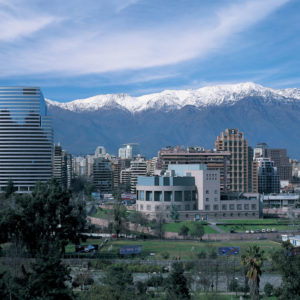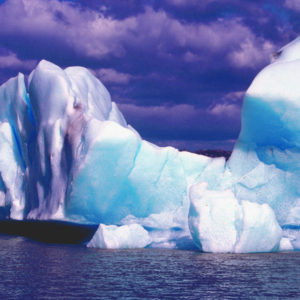Video courtesy of Chile Tourism
Known as the Land of Fire and Ice – Chile has the largest north to south reach of any country in the world with 4,350 kilometres (2,700 miles) of coastline, bestowing upon it a host of unique geographical features. The world’s driest point is found in the Atacama Desert in Chile’s northern reaches whilst moving south the landscape comes alive passing through a combination of mountains, lakes and icecaps before plunging dramatically into the ocean at Cape Horn.
Today, Chile is arguably the most developed South American country and the capital city, Santiago, presents a mixture of first world infrastructure and old world charm, whilst serving as the gateway to Chile’s many natural wonders. The spectacular backdrop of the Andes looming high above the city is home to a number of ski resorts all within two hours driving time, a similar distance to the west takes you to the charming port of Valparaiso. Surrounding the city on three sides, Chilean wine country has become somewhat of a talking point amongst experts, even reviving the Carmenere grape which was thought to be extinct.
To the north, the oasis town of San Pedro de Atacama, built almost entirely of adobe, is the base for exploring the vibrant landscapes of the surrounding desert and volcanoes reaching heights of almost 7,000 metres (22,500 feet). Moving south, the panorama becomes increasingly greener and reaches its climax in the Lake District – a natural playground of tranquil lakes, raging rivers and ancient forests. This southern region is the seat of Chilean culture and home of the fearsome Mapuche people who remained defiant to the Spanish colonial powers for 300 years.
Leaving behind the Lake District, the terrain is increasingly dominated by the impressive scenery of Southern Patagonia, home to the towering peaks of Torres del Paine National Park and the glaciers of the Southern Ice Sheets making it a perfect destination for those looking to experience nature in its purest guise.
Chile is not merely a country of natural wonders. Some 3,600 kilometres (2,250 miles) west of the mainland lies Easter Island – not only the most remote inhabited place on earth, but also one of the world’s true archaeological and historical jewels. Primarily known for the Moai stone statues which can be found there – of which 887 have been inventoried and are thought to be over 500 years old – the island is a living open air museum of archaeological, historical and anthropological interest.
- Santiago
- The Atacama Desert
- The Lake District
- Southern Patagonia
- Easter Island
- Northern Patagonia, an unexplored land
- Climate
Coastal Chile enjoys a sea breeze so it generally feels cooler here than inland. Temperatures between 5ºC – 10ºC are most common. The rainy season is from May to August when temperatures are cooler.
The mountainous Lake District is cool throughout the year, enjoying a northern European climate. Here, April through June are the months of heaviest rainfall, and November through March is considered the best travel time, but is also the time of year that attracts the biggest crowds.
Chilean Patagonia is mainly cool, with unpredictable changes of weather throughout the year. Despite its southerly location the winter months benefit from much less wind and temperatures rarely drop much below freezing during the day. Chilean Patagonia and Tierra del Fuego have summer averages of 11°C (52°F)
The Atacama Desert in northern Chile is one of the Earth’s driest areas and enjoys sunny weather and high temperatures all year round – ideal for the sun seeker!
Easter Island has a Pacific Island tropical climate that is heavily influenced by winds and ocean currents. The hottest months are January and February although good weather is available all year round.
Showing all 2 results


